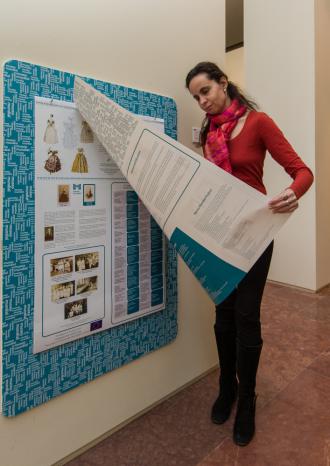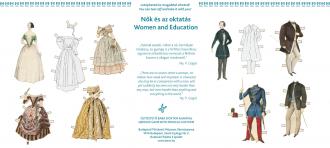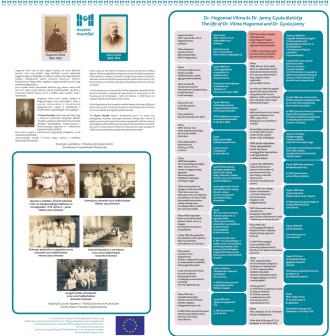How to do it step by step
1st Step:
Choose object and topic
One of the most popular thematic sections in the permanent exhibition of Budapest history is called “Housing”. The Civil Room shows the surviving furniture belonging to Dr. Gyula Janny, a very successful doctor in the 19th Century. Using the exhibition’s touchscreens, we can obtain several pieces of information about him. However, there is not much information about his family, who also lived at this place. In addition, there was a woman doctor from the same era called Vilma Hugonnai, who fought for Hungarian women to be able to attend universities. By merging these themes, we fulfilled our intention of arranging an exhibition that both had a personal dimension and related to the position of women in society.
2nd Step:
Check technical requirements
Although there is not much space available in this exhibition, the material, which can be torn off, was very well placed, near Janny’s tableau. We wanted to introduce an interactive element at this location, which visitors would want to take away with them. That is how the material inspired by items in the museum’s antique collection was born: the paper dressing up game presenting a man and a woman from the 19th century, where both genders can wear medical clothing.
It was important that the installation could bear the weight of the paper pad and that sheets could easily be torn off without damaging the wall.
3rd Step:
Quotes
Once we had decided on the size and surface area approproate for the content, manufacturing accounted for the majority of the budget (printing). There were significant differences between printing quotes.
4th Step:
Create content
We wanted to create something that makes the visitor think. Material from other museum collections provided the inspiration for the game. The timeline idea arose from a brainstorming session with our work colleagues, but it is difficult for some visitors to make sense of it. Therefore, the content should be tested by someone who is not involved in the project. However, the content was checked by the curator of the exhibition.
5th Step:
Installing the installation in the museum
As regards installing the installation in the museum, it is important to find a place where it is easy for the exhibition guards to replace the tear-off pad when the sheets run out. In our case, we found the perfect place.





















